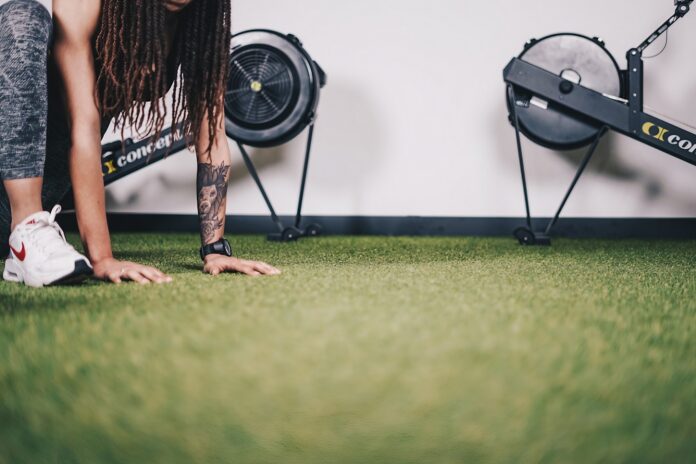The Importance of a Balanced Workout Routine
Picture this—you’re pumped up, ready to hit the gym, but unsure whether to grab those dumbbells, hop on a treadmill, or unroll your yoga mat. Sound familiar? Building a balanced workout routine that includes strength training, cardio, and flexibility can be your golden ticket to optimum fitness.
In this guide, we’ll cover why this trio is essential, how to master each component, and how to blend them for a routine that’s as dynamic as you are. Whether you’re a seasoned gym-goer or just starting your fitness journey, there’s something here for everyone.

Understanding the Basics of Strength Training
Benefits of Strength Training
Strength training isn’t just about bulging muscles and Instagram-worthy bicep curls. It’s a powerhouse for your overall health. First up, it boosts your metabolism. Muscle tissue burns more calories at rest compared to fat tissue, so the more muscle you build, the more calories you burn even when you’re Netflix-and-chilling.
Secondly, it strengthens your bones and reduces the risk of osteoporosis. And, let’s not forget, it enhances your mental health. Pumping iron releases endorphins, those feel-good hormones that battle stress and anxiety.
Key Principles for Effective Strength Workouts
Now, onto the nitty-gritty. Effective strength training hinges on consistency, progressive overload, and proper form. Consistency means hitting the weights regularly — aim for at least two sessions per week. Progressive overload involves gradually increasing the weight or resistance to challenge your muscles. Finally, form is crucial to prevent injuries. Always prioritize technique over lifting heavier weights.
Sample Beginner to Intermediate Strength Training Routine
Ready to get started? Here’s a simple routine to get those muscles firing:
- Monday: Upper Body (Push) – Exercises like bench presses and shoulder presses.
- Wednesday: Lower Body – Squats, lunges, and calf raises.
- Friday: Upper Body (Pull) – Think rows and bicep curls.
Start with lighter weights and gradually increase as you become more comfortable. Remember to warm up before and cool down after your sessions to keep those muscles happy.
Incorporating Cardio for a Healthy Heart and Weight Management
Benefits of Cardiovascular Exercise
Cardio isn’t just for runners or cyclists; it’s a vital part of any fitness regimen. Firstly, cardio improves heart health by increasing your heart rate and enhancing circulation. It’s also fantastic for weight management. Regular cardio burns calories and helps maintain a healthy weight. Last but not least, it uplifts your mood. That post-run euphoria? That’s the magic of cardio-induced endorphins.
Different Types of Cardio Workouts and Their Impact
Cardio comes in various flavors. There’s steady-state cardio like jogging or cycling at a consistent pace. This is great for endurance and burns calories steadily. Then there’s high-intensity interval training (HIIT), which alternates between intense bursts of activity and rest periods. HIIT is a time-efficient way to torch calories and improve cardiovascular health. Lastly, there’s recreational cardio like dancing or hiking. These activities make exercising fun and social.
Guidelines for Cardio Frequency and Intensity
For optimal benefits, aim for at least 150 minutes of moderate-intensity cardio or 75 minutes of vigorous-intensity cardio per week. This can be broken down into manageable chunks. For instance, five 30-minute brisk walks or three 25-minute HIIT sessions. Adjust the intensity based on your fitness level and goals.
Sample Cardio Workout Plan for Varied Fitness Levels
Here’s a versatile cardio plan:
- Beginner: 30-minute brisk walk, five times a week.
- Intermediate: 20-minute jog, four times a week, with one day of HIIT.
- Advanced: Mix of 45-minute cycling sessions, running, and two days of HIIT.
Choose what feels right for you and modify as needed. The key is to keep moving and enjoy the process.
Enhancing Flexibility and Mobility for Better Functionality
Importance of Flexibility and Mobility in Daily Life and Exercise
Flexibility and mobility aren’t just for yogis. They’re essential for everyone. Improved flexibility reduces muscle stiffness and lowers the risk of injuries. Mobility, on the other hand, enhances your range of motion and functional movements, making everyday tasks easier and more efficient.
Methods to Improve Flexibility and Mobility
There are several ways to boost your flexibility and mobility. Static stretching involves holding a stretch for 15-60 seconds, improving flexibility over time. Dynamic stretching involves controlled movements that prepare your muscles for activity. Yoga is another effective method, combining stretching with mindfulness. Lastly, foam rolling helps release muscle tightness and improve blood flow.
Sample Flexibility and Mobility Routine
Incorporate this routine into your week:
- Daily: Dynamic stretches before workouts, like leg swings and arm circles.
- After Workouts: Static stretches targeting major muscle groups, like hamstrings and quadriceps.
- Weekly: One or two yoga sessions focusing on full-body flexibility and relaxation.
Integrating these practices will enhance your overall movement quality and reduce the risk of injuries.
Putting It All Together – How to Create Your Balanced Workout Plan
Balancing Strength, Cardio, and Flexibility Workouts
Creating a balanced workout plan involves incorporating all three components—strength, cardio, and flexibility. Aim for two to three strength training sessions, two to three cardio sessions, and daily flexibility exercises. This balance ensures comprehensive fitness, covering muscle building, cardiovascular health, and mobility.
Weekly Schedule Example for a Balanced Workout Routine
Here’s a sample weekly schedule:
- Monday: Strength (Upper Body)
- Tuesday: Cardio (HIIT)
- Wednesday: Strength (Lower Body) + Flexibility
- Thursday: Cardio (Steady-State)
- Friday: Strength (Full Body)
- Saturday: Cardio (Recreational) + Flexibility
- Sunday: Rest/Light Activity + Flexibility
Adjust the schedule based on your availability and recovery needs. The goal is to stay consistent and enjoy the process.
Tips for Adapting the Routine to Individual Fitness Goals and Schedules
Everyone’s fitness journey is unique, so tailor your routine to fit your goals and lifestyle. If weight loss is your goal, focus more on cardio. If building muscle is your aim, prioritize strength training. Busy schedule? Opt for shorter, high-intensity sessions. Listen to your body and adjust as needed. Remember, consistency is key.
Staying Motivated and Tracking Progress
Tips for Staying Motivated Throughout Your Fitness Journey
Staying motivated can be challenging, but the right strategies can make all the difference. Set realistic and achievable goals to keep you focused and driven. Finding a workout buddy can also be a game-changer, as it adds an element of accountability and fun. Keep your workouts varied and enjoyable by trying new activities or classes. Celebrate your milestones, no matter how small, to remind yourself of how far you’ve come. Lastly, remember to listen to your body and give yourself grace—rest and recovery are essential components of a successful fitness journey.
Effective Methods for Tracking Your Progress
Tracking your progress is crucial for staying on course and seeing the results of your hard work. Keep a fitness journal where you jot down your workouts, weights lifted, and how you felt. Use fitness apps or wearable technology to monitor your heart rate, steps, and calories burned. Regularly take photos or measure your body metrics to visually see changes over time. Setting periodic fitness tests, like running a specific distance or performing a set number of reps, can also provide tangible evidence of your improvement.
Adapting to Setbacks and Reevaluating Goals
Setbacks are an inevitable part of any fitness journey, but how you handle them makes all the difference. If you hit a plateau or encounter an injury, don’t get discouraged. Instead, take it as an opportunity to reassess and adjust your plan. Sometimes, you might need to modify your goals to be more realistic or find alternative ways to stay active. It’s important to remain flexible and patient with yourself. Remember, progress is not always linear, and resilience is key to long-term success.
The Long-Term Benefits of Consistent, Balanced Exercise
Consistency and balance in your workout routine offer long-term benefits beyond physical fitness. Regular exercise boosts mental health, improves sleep, and enhances overall quality of life. It reduces the risk of chronic diseases and keeps you energized and motivated. Plus, it fosters a positive relationship with your body and boosts self-confidence.
Make Your Move – Start Building Your Balanced Workout Routine Today
Ready to take the plunge? Begin your balanced workout routine today and experience the myriad benefits of strength, cardio, and flexibility. Share your progress and connect with fellow fitness enthusiasts to stay motivated.
Your fitness journey starts now—embrace it with enthusiasm and dedication!
